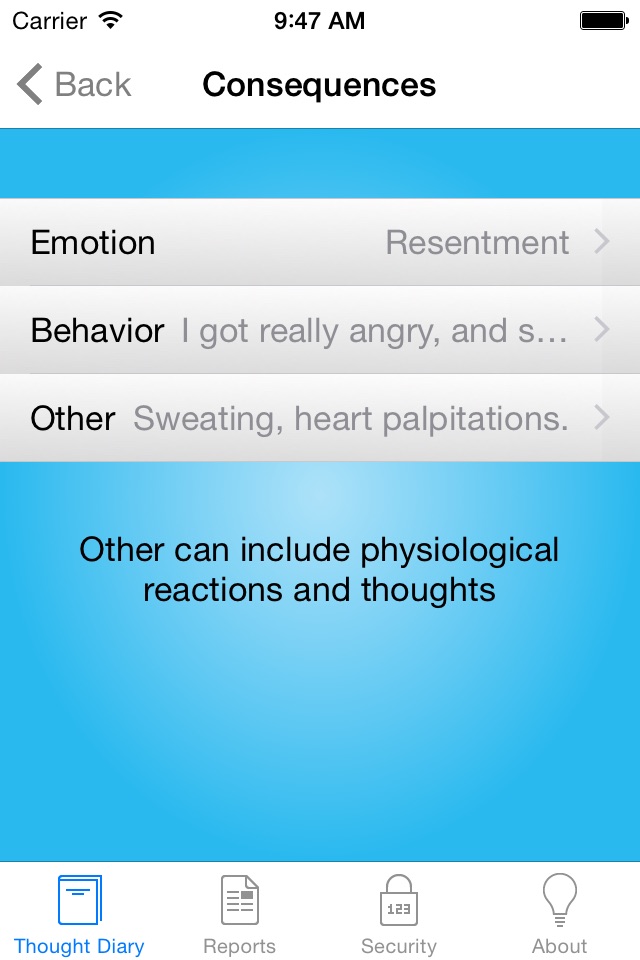
Thought Diary
Thought Diary sehr gutes Programm aus happtic Pty. Ltd.
Release-Datum 15 years ago 1.0.3 version.A thought diary is designed to help people record the thoughts that cause emotional and psychological distress. By recording our unhelpful thoughts, we can learn to identify thinking errors (also known as ‘negative’, ‘automatic’ or ‘dysfunctional’ thoughts). It is a common tool used in CBT to assist individuals in identifying unhelpful thinking patterns, which will then provide the opportunity to challenge and change these thoughts and thereby reducing psychological distress.
This Thought Diary is designed to be the first step in changing our thoughts by helping individuals identify the trigger situations for their negative thoughts and the emotional and behavioural consequences of experiencing these negative thoughts. It was designed by an experienced clinical psychologist and CBT therapist who believed that these tools should be available in the most accessible form for individuals to use in today’s fast technological world. It can be used by people either in therapy as a useful adjunct to the treatment, and there is a feature that allows the Thought Diary to be emailed straight to their therapist. However, it can also be used by those individuals who are embarking on a self-guided course of CBT.
When the Thought Diary is emailed it takes the traditional format of a CBT thought record.
How to Use:
The Thought Diary should be used when you experience a negative emotional state or engage in unhelpful or self destructive behaviour (Consequences).
Step one: record what you were doing and where you were at that time (date, time and situation). This can help identify whether there is a particular pattern present in the emotional distress or behaviour problem.
Step two: note down what you were thinking at the time (thought), and how much you believed this thought (belief rating). The belief rating is useful to determine the degree to which we believe the thoughts, and can indicate whether the conviction in these thoughts changes when we challenge these thoughts in the next step of CBT.
Step three: record how you felt and what you did in response (consequences). It can sometimes be easier to write down the consequences as the first step as they are primary indicators of distress, and then work through the other categories. There are usually both emotional and behavioural consequences, and sometime another thinking pattern is activated which is why we have provided a category for ‘thoughts’.
However, it may not be necessary to complete all these categories in the consequences step if only emotional and/or behavioural disturbance is obvious.
Andere Anwendungen von happtic Pty. Ltd.
First ServeKit Quiz UK
Moving Van
Photo Copy
Thought Diary
Thought Diary Pro
Mood & Anxiety Diary
Activity Diary
Gifted TY - Thank You
Behavioral Experiments - CBT





